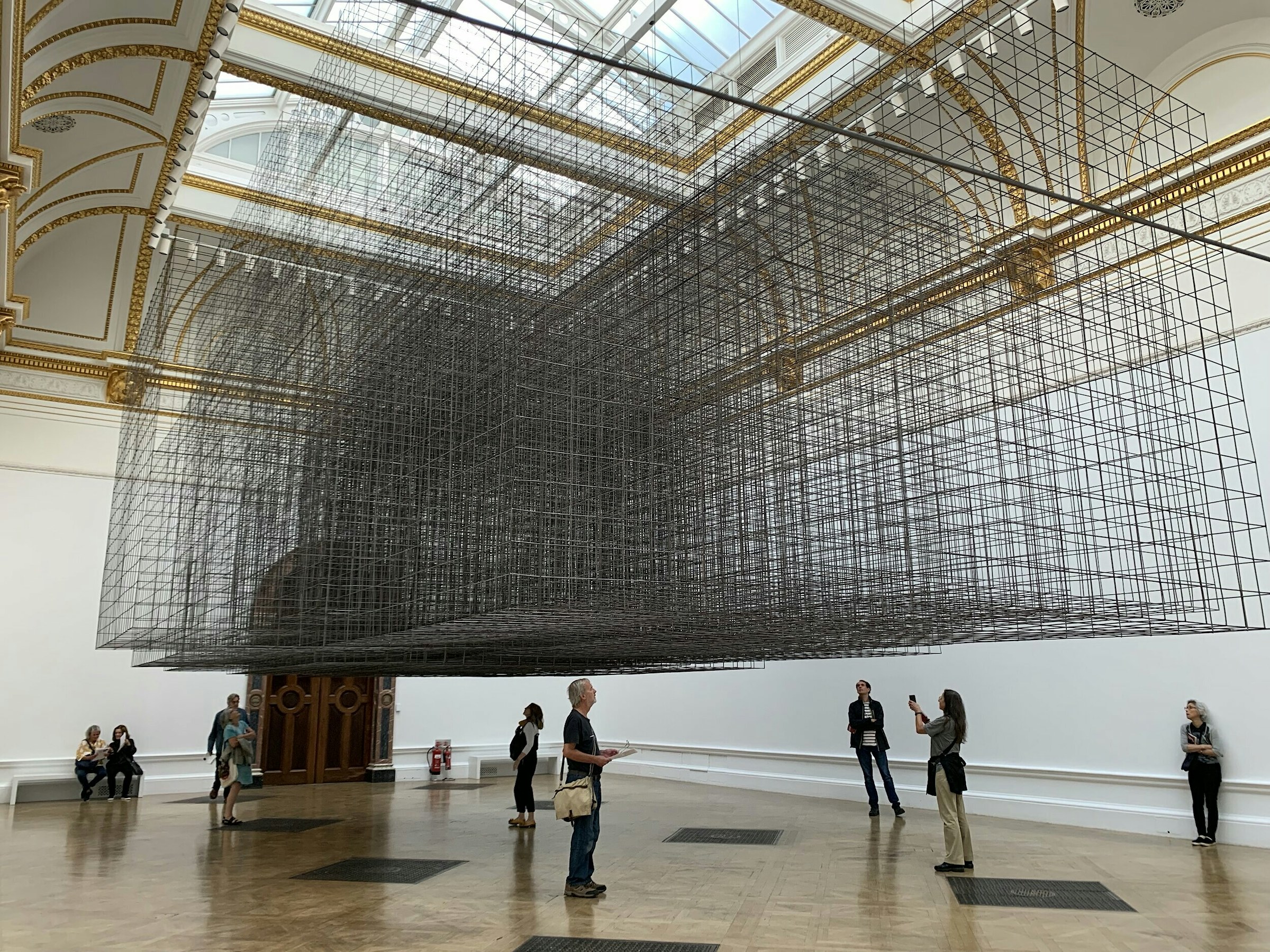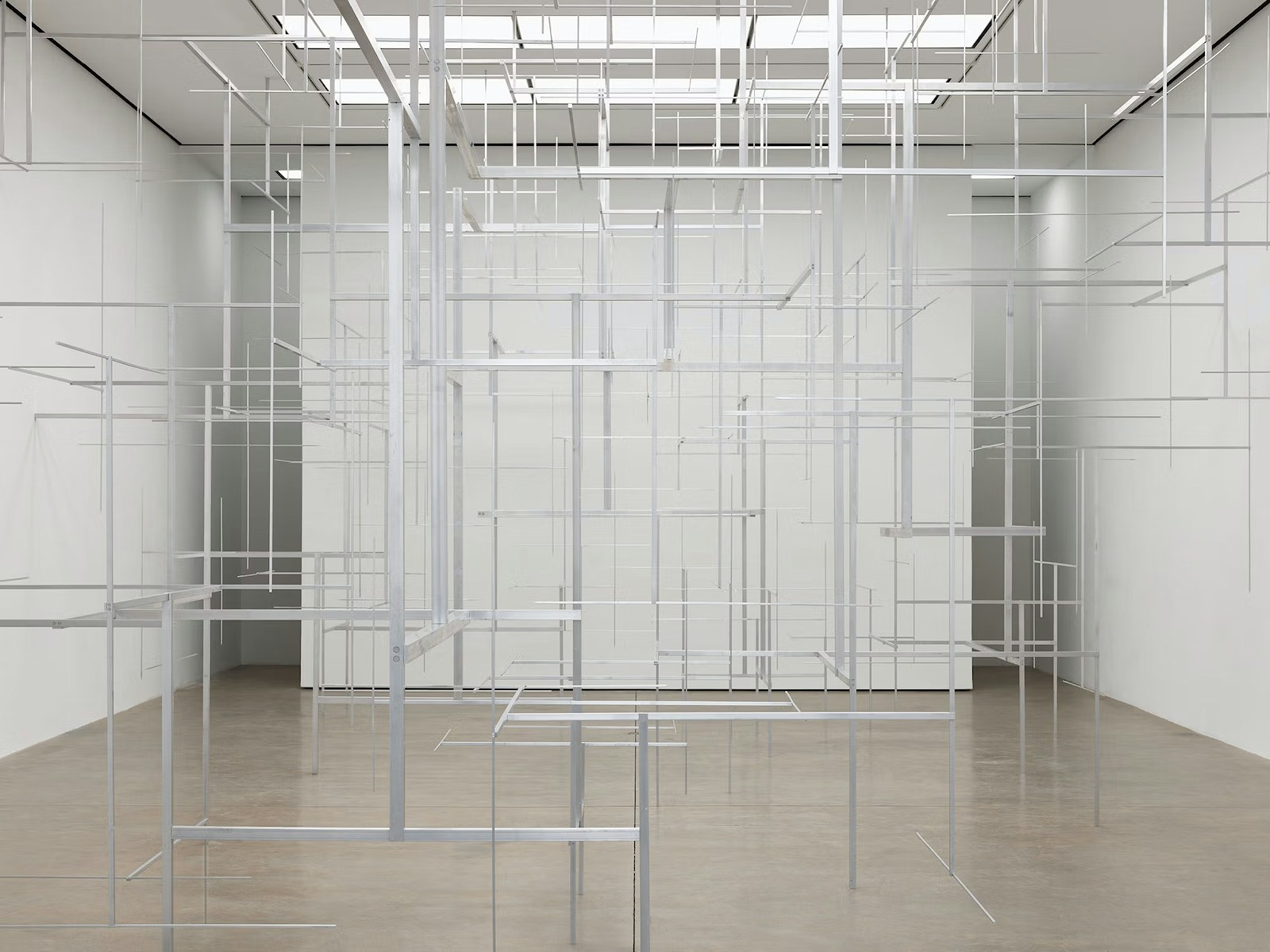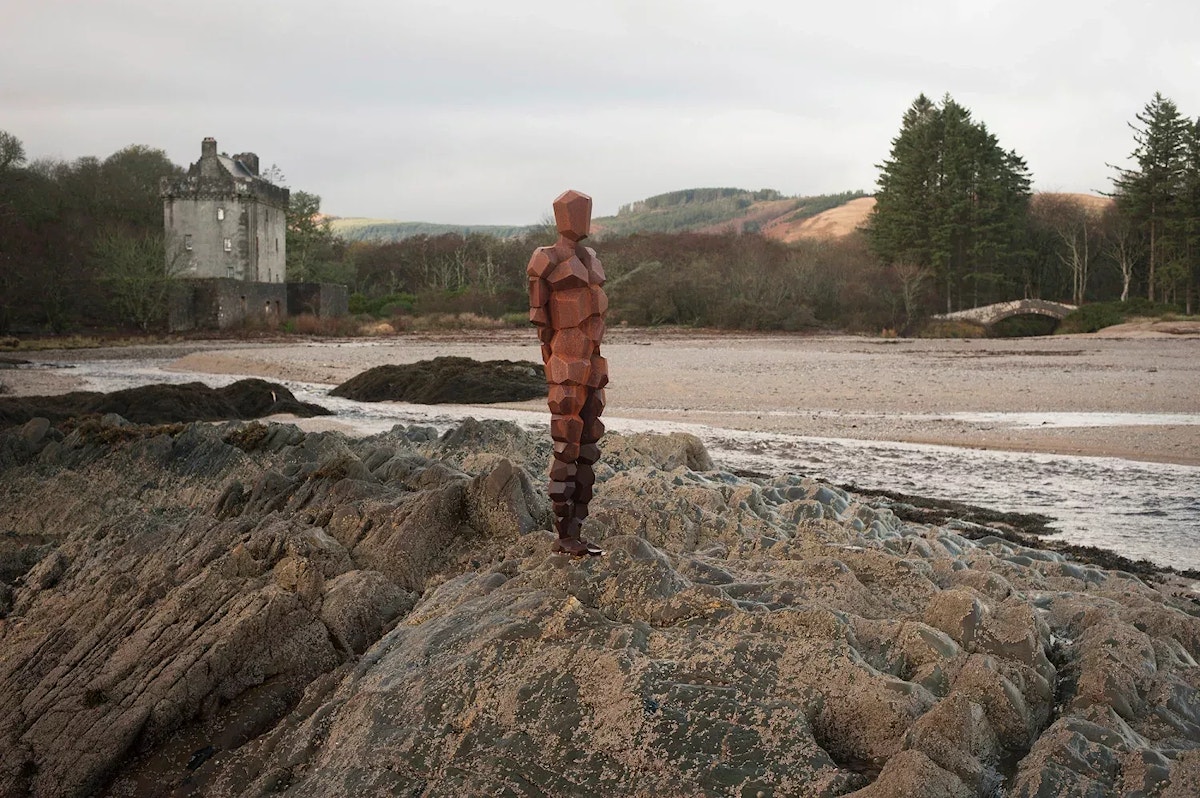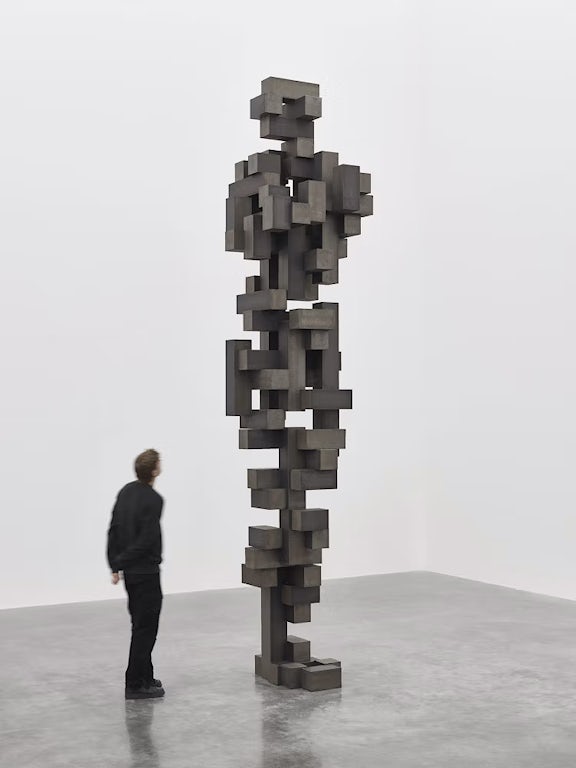Antony Gormley
Antony Gormley’s ‘Angel of the North’, is the United Kingdom’s most recognizable piece of public art and has become a national landmark that has dominated the skyline since it was installed in 1998. The giant figure majestically stands on a hillside in Gateshead, a town in northeast England, off a major highway connecting London and Edinburgh. It is believed to be the largest angel sculpture in the world with a wingspan of 177’ and standing over 65’ high. It is a ‘beacon of warmth’ with outstretched wings welcoming you home. Gormley was awarded the commission by the Gateshead Town Council in 1990 to design a sculpture that would reflect the history of the site, known for two centuries of coal mining and its contribution in England's industrial revolution. Gormley was acutely sensitive to the site and created what he calls a poetic resonance. “The angel resists our post-industrial amnesia and bears witness to the hundreds and thousands of colliery workers who had spent the last three hundred years mining coal beneath the surface.”




Assistants spread plaster over Antony Gormley’s body.
Antony Gormley was the youngest in a family of seven children, born in Hampstead Garden, a wealthy suburb of London, on August 30th, 1950. He studied at Trinity College in Cambridge, graduating with degrees in archaeology, anthropology and art history. He travelled to India, where he studied Buddhism, and meditation, which he has credited as the most singular important period of his life that continues to inform his work today. When he returned to England, Gormley attended Saint Martin’s School of Art and Goldsmiths, with a postgraduate course in sculpture at the Slade School of Fine Art. At Slade, Gormley met fellow artist Vicken Parsons, who became his assistant and later his wife in 1980. She would wrap his body in plaster, reflecting back on his time in India, where he saw people asleep on the streets wrapped in thin cotton saris. Once the plaster had hardened, it was removed and then reinforced with fiberglass and later with sheets of lead to become a hollow body case. He continues to use his own body as a starting point for his sculptures investigating the relationship of the human body and the space it inhibits. Today, Gormley uses body digital scanning, that allows him to hold poses that are energetic and fluid.
“It’s a paradox that our body is a physical thing, an object in the world, but that it also contains consciousness that has this potential of infinite expansion.”
-Antony Gormley

“Sound II” (1986) by Antony Gormley (a cast from the artist’s own body), standing beneath Winchester Cathedral
His sculptures feel intimate, though often monumental in scale. He invites people to move amongst his work, to participate. Gormley’s installations are site specific. ‘Sound II’, is a singular man placed in the crypt of Winchester Cathedral, knee-deep in water. Similarly, ‘Another Place’, features figures on Crosby Beach in Liverpool, England. The three-kilometer installation places figures on the shore and in the water, changing as the tide comes in and out. In 2010 Gormley’s ‘Event Horizon’ was installed in Manhattan, NYC. It consisted of 31 sculptures, some at ground level and others on rooftops and ledges in the vicinity of Madison Square Park. The one-hundred life-sized sculptures installed at Houghton Hall in Norfolk in 2024, married contemporary art with the Palladian beauty of this famous English country house. ‘Body Politic’, 2023, explored ‘silence, stillness and materiality and our human need for refuge and freedom of movement. "Each part of this show is an attempt to assess and reflect on our present condition: us now".

Another Place, Stavanger, Norway, 1998. Another Place, 1997, cast iron, 189 × 53 × 29 cm (100 elements)
In 2019, I had a wonderful opportunity to visit Gormley's exhibit at London's Royal Academy of Art. It was an extraordinary experience that made me a Gormley fan. Walking under 'The Matrix', a gigantic steel grid hanging from the ceiling was fascinating. Another gallery was filled with a tangled mass of coiled flexible tubing that engulfed the entire room. The galleries' historic floors and walls were reinforced for the scale and weight of the installations. It made me realize the breadth of importance that public art has played in my life and many, many other - even if we are not always consciously aware of it's impact.


Antony Gormley, along with Henry Moore, Barbara Hepworth, Christo and Jeanne Claude, Igor Mitoraj, and Anish Kapoor are among my favourite twentieth-century artists whose works of sculpture have a power, an energy, that connects us, challenges us, inspires us, and on a basic level, enhances our well-being. Studies consistently prove that art improves our mental health, stimulates our creativity and releases stress. As Gormley reflected, “I see my work as offering a pause, a moment of stillness and reflection in a fast-paced, busy world.”
Gormley’s work has been widely exhibited in many galleries, museums and public spaces. He was awarded the Turner Prize in 1994, became an Order of the British Empire in 1998 and knighted by the Queen in 2014. In 1998 Gormley was paid £800 by Gateshead Council for his now famous Angel of the North sculpture. In 2011, a maquette measuring 39" x 111" x 8" sold at Christie's for close to $4.5 million USD.
I’ll continue to follow Sir Antony Gormley’s work and look forward to seeing his pieces in extraordinary interiors, museums and public installations. Below is a small collection of Antony Gormley's work. I hope this will leave this article inspired.

Antony Gormley. Pavla Melková, Galerie Rudolfinum, Prague, Czech Republic. 5 September 2024–5 January 2025

Aerial, White Cube, New York, USA. 30 April–15 June 2024

Grip, 2014, cast iron, 189 × 38 × 48 cm. Photograph by Clare Richardson, courtesy White Cube.

Antony Gormley - Body Buildings, Galleria Continua, Beijing, China 2024–25. Resting Place II, 2024, terracotta, 132 figures


Body Politic, White Cube Bermondsey, London, UK. 22 November 2023–28 January 2024

Stand, 2023, Corten steel, 471.26 × 106.49 × 109.43 cm. Photo © White Cube (Theo Christelis)

Capacitor, 2001, mild steel tubes 12 mm (id), mild steel rod 5mm × various lengths, body-form 190 × 48 × 35 cm, fully extended work 271 × 242 × 229 cm